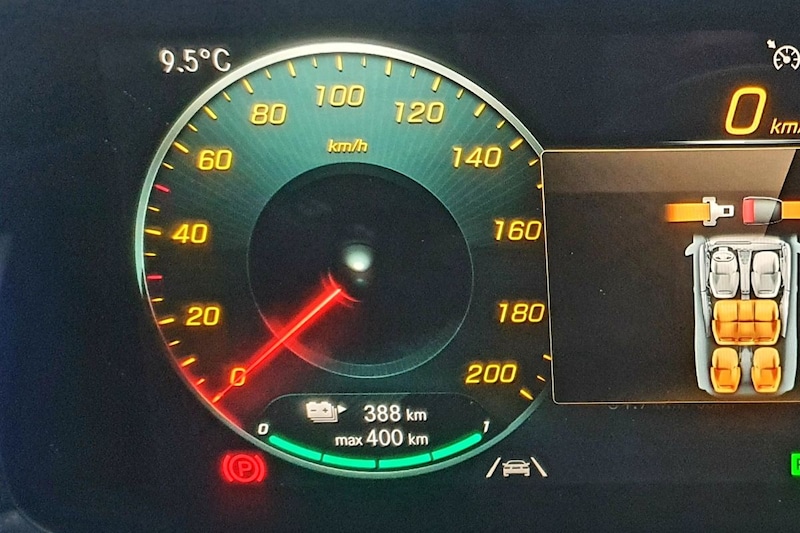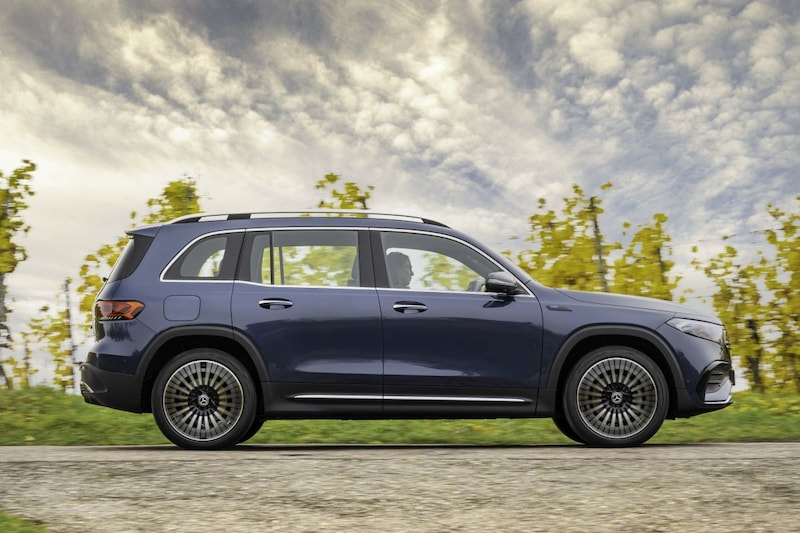
That storm week was not only irritating, but also very educational. As an electric driver you will once again find out what the wind is doing to your consumption. It’s a crash diet for your battery, the miles fly off. Of course, petrol and diesel engines also consume more than normal under harsh conditions, but with EVs you quickly talk about an increase of 20 to 30%, and charging is known to be a bit more hassle than refueling.
On one of the last stormy days I bring a Mercedes EQB back from Groningen to The Hague. It will be a trip with all the ingredients of an EV nightmare: almost exclusively highway, torrential rain, low outside temperature, headwind. Franklin slams into the car head on. Then fast charging becomes a very big theme. I’ll make it in one go, but rather not with my tail between my legs. Happened to me once in the i3 with 5 kilometers to go thanks to a faulty fast charger along the A28. Fun is different.
For the EQB I planned a stopover at Fastned station Aalscholver along the A6 between Lelystad and Almere. It could be very busy there. On highways there is a direct relationship between wind force and charging station pressure. My suspicion turns out to be correct. All charging points are occupied. Cormorant is a regular fixture for motorists who travel long distances from the north, especially at barren weather. On the way, they see exorbitant consumption averages on the on-board computer and come here to recover for the rest of their journey. Damn annoying to stand in front of a closed door. In the nervous maneuvers of a waiting Audi e-tron I can almost feel the horror. There is someone in a hurry and in dire need. That big Audi normally likes quite a lot. My wild guess is it’s now at at least 30 kWh per 100 miles, if not worse.

Mercedes-Benz EQB
For me, the damage is minor. The EQB is quite efficient. It doesn’t get any worse than 22 kWh, provided you stick to the maximum speeds in an exemplary manner. My situation is not alarming. I still have 90 kilometers to go from Cormorant with 188 kilometers of power reserve. Although: I started in Groningen with 400 kilometers and of that theoretical range I have already lost more than 200 kilometers after driving 133 kilometers. If the wind continues to blow and it starts to rain even harder, or I have to make a detour after a serious incident, it can still get a bit tedious. It does indicate what we as plug drivers deal with; a logistically complex situation. The charging infrastructure should be expanded considerably on the routes to and from the corners of the Netherlands, although there is visible work being done on this.
On to the next stop. Fortunately, there is only one Kona at the Hackelaar along the A1, which is not too bad. But on my way to The Hague, I see it swarming at the Fastned stations. I know what my hunted, blown away fellow sufferers are thinking: Let It Stop.
In recent years I often heard European car drivers, probably mainly out of frustration with Tesla, to put the importance of range into perspective. We needed faster chargers – which were much faster at Tesla, by the way. As an experience expert, I agree and I am pleased to see that most manufacturers are making great strides in this regard. But you don’t want to be fatally dependent on it. Reach remains crucial. The lower limit is for EVs that are often used for long journeys, yet at a range of 400, I’m afraid. Unfortunately, we cannot impose a storm ban on nature.
– Thanks for information from Autoweek.nl